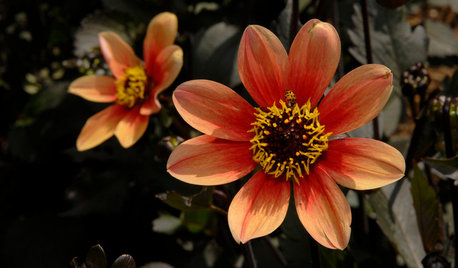powdery mildew - spray didn't work
sammy zone 7 Tulsa
16 years ago
Related Stories

MATERIALSInsulation Basics: What to Know About Spray Foam
Learn what exactly spray foam is, the pros and cons of using it and why you shouldn’t mess around with installation
Full Story
COASTAL STYLEHow to Make Your Oceanfront Garden Thrive
You may love the beach, but many plants don't. Learn which ones are best for your warm-weather oceanside garden getaway
Full Story
GARDENING GUIDESGreat Design Plant: Rosa Banksiae a Low-Maintenance Beauty
This thornless, disease- and insect-resistant rose brings showers of white or yellow flowers to the spring garden
Full Story
DECORATING GUIDES10 Easy Fixes for That Nearly Perfect House You Want to Buy
Find out the common flaws that shouldn’t be deal-breakers — and a few that should give you pause
Full Story
FLOWERSGreat Design Plant: Dahlias
Pick this flamboyant stunner for its amazing array of colors and faces, fast growth and sizes that can fill a pot or a whole garden
Full Story
MOST POPULARSo You Say: 30 Design Mistakes You Should Never Make
Drop the paint can, step away from the brick and read this remodeling advice from people who’ve been there
Full Story
HOUSEKEEPINGHow to Clean a Glass Shower Door
See which tools and methods will keep those glass shower walls and doors sparkling clean
Full Story
HOUSEKEEPINGHow to Clean Grout — Stains and All
If your grout is grossing you out, this deep-cleaning method will help it look new again
Full Story
GARDENING AND LANDSCAPING11 Ways to Make Your Sleeping Porch Even Better
Turn off that air conditioner and tune in to the delights of slumbering in the nighttime breeze
Full Story
MOST POPULARShe’s Baaack! See a Savvy DIYer’s Dramatic $400 Bathroom Makeover
You’ve already seen her dramatic laundry room makeover. Now check out super budget remodeler Ronda Batchelor’s stunning bathroom update
Full StorySponsored







kaye
jerijen
Related Discussions
Does Fish Emulsion work on Powdery Mildew???
Q
Does milk solution work for Powdery Mildew on Squash?
Q
Powdery Mildew.....Again!!
Q
Milk/Powdery mildew success
Q
sammy zone 7 TulsaOriginal Author
michaelg
sammy zone 7 TulsaOriginal Author
jerijen
berndoodle
sammy zone 7 TulsaOriginal Author
michaelg
anntn6b
cupshaped_roses
nberg7
berndoodle
michaelg
buford
michaelg
roseleaf
patricianat
sammy zone 7 TulsaOriginal Author
berndoodle